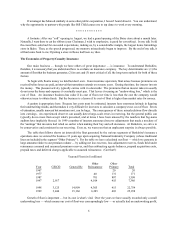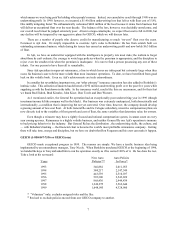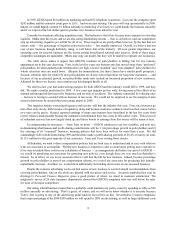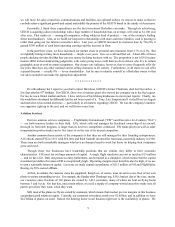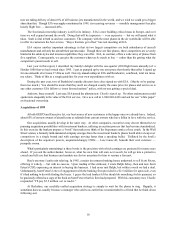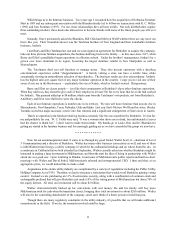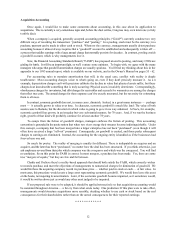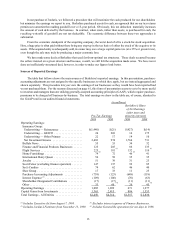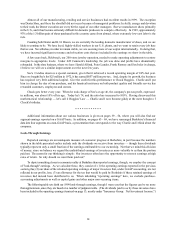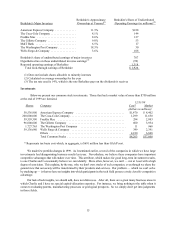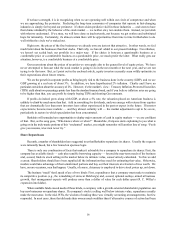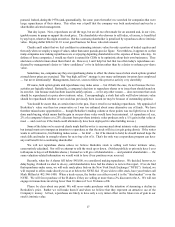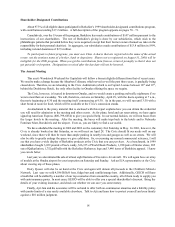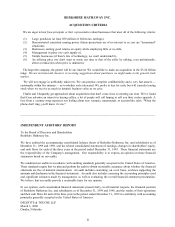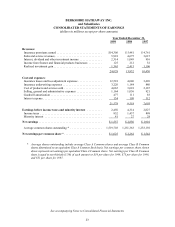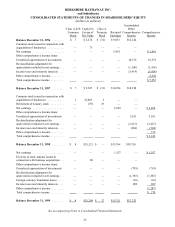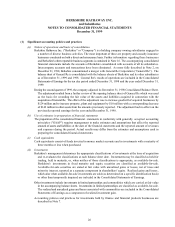Berkshire Hathaway 1999 Annual Report Download - page 17
Download and view the complete annual report
Please find page 17 of the 1999 Berkshire Hathaway annual report below. You can navigate through the pages in the report by either clicking on the pages listed below, or by using the keyword search tool below to find specific information within the annual report.16
If we have a strength, it is in recognizing when we are operating well within our circle of competence and when
we are approaching the perimeter. Predicting the long-term economics of companies that operate in fast-changing
industries is simply far beyond our perimeter. If others claim predictive skill in those industries — and seem to have
their claims validated by the behavior of the stock market — we neither envy nor emulate them. Instead, we just stick
with what we understand. If we stray, we will have done so inadvertently, not because we got restless and substituted
hope for rationality. Fortunately, it’s almost certain there will be opportunities from time to time for Berkshire to do
well within the circle we’ve staked out.
Right now, the prices of the fine businesses we already own are just not that attractive. In other words, we feel
much better about the businesses than their stocks. That’s why we haven’t added to our present holdings. Nevertheless,
we haven’t yet scaled back our portfolio in a major way: If the choice is between a questionable business at a
comfortable price or a comfortable business at a questionable price, we much prefer the latter. What really gets our
attention, however, is a comfortable business at a comfortable price.
Our reservations about the prices of securities we own apply also to the general level of equity prices. We have
never attempted to forecast what the stock market is going to do in the next month or the next year, and we are not
trying to do that now. But, as I point out in the enclosed article, equity investors currently seem wildly optimistic in
their expectations about future returns.
We see the growth in corporate profits as being largely tied to the business done in the country (GDP), and we see
GDP growing at a real rate of about 3%. In addition, we have hypothesized 2% inflation. Charlie and I have no
particular conviction about the accuracy of 2%. However, it’s the market’s view: Treasury Inflation-Protected Securities
(TIPS) yield about two percentage points less than the standard treasury bond, and if you believe inflation rates are going
to be higher than that, you can profit by simply buying TIPS and shorting Governments.
If profits do indeed grow along with GDP, at about a 5% rate, the valuation placed on American business is
unlikely to climb by much more than that. Add in something for dividends, and you emerge with returns from equities
that are dramatically less than most investors have either experienced in the past or expect in the future. If investor
expectations become more realistic — and they almost certainly will — the market adjustment is apt to be severe,
particularly in sectors in which speculation has been concentrated.
Berkshire will someday have opportunities to deploy major amounts of cash in equity markets — we are confident
of that. But, as the song goes, “Who knows where or when?” Meanwhile, if anyone starts explaining to you what is
going on in the truly-manic portions of this “enchanted” market, you might remember still another line of song: “Fools
give you reasons, wise men never try.”
Share Repurchases
Recently, a number of shareholders have suggested to us that Berkshire repurchase its shares. Usually the requests
were rationally based, but a few leaned on spurious logic.
There is only one combination of facts that makes it advisable for a company to repurchase its shares: First, the
company has available funds — cash plus sensible borrowing capacity — beyond the near-term needs of the business
and, second, finds its stock selling in the market below its intrinsic value, conservatively-calculated. To this we add
a caveat: Shareholders should have been supplied all the information they need for estimating that value. Otherwise,
insiders could take advantage of their uninformed partners and buy out their interests at a fraction of true worth. We
have, on rare occasions, seen that happen. Usually, of course, chicanery is employed to drive stock prices up, not down.
The business “needs” that I speak of are of two kinds: First, expenditures that a company must make to maintain
its competitive position (e.g., the remodeling of stores at Helzberg’s) and, second, optional outlays, aimed at business
growth, that management expects will produce more than a dollar of value for each dollar spent (R. C. Willey’ s
expansion into Idaho).
When available funds exceed needs of those kinds, a company with a growth-oriented shareholder population can
buy new businesses or repurchase shares. If a company’s stock is selling well below intrinsic value, repurchases usually
make the most sense. In the mid-1970s, the wisdom of making these was virtually screaming at managements, but few
responded. In most cases, those that did made their owners much wealthier than if alternative courses of action had been


